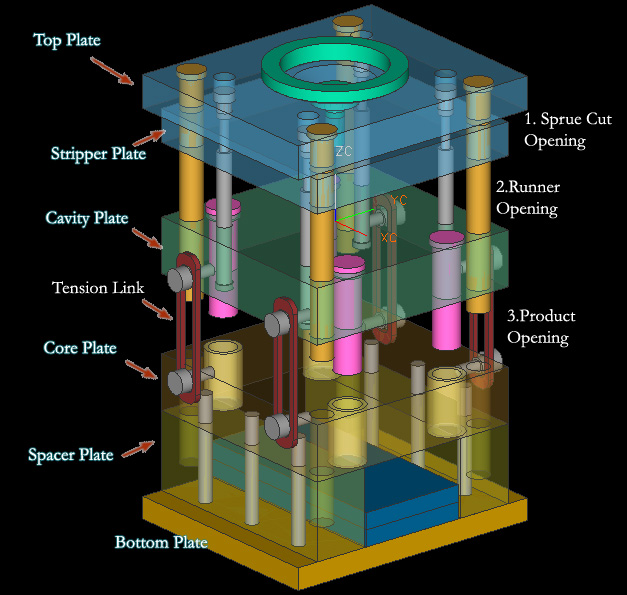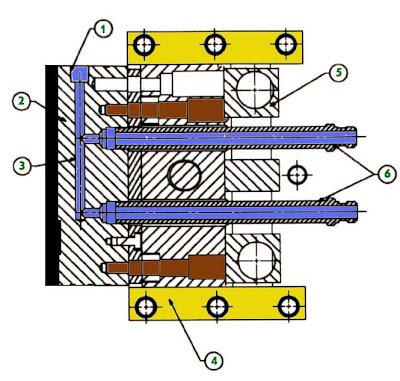in designing the runner, first-time we must consider items that affecting runnersize, some of which
- Volume of part, the greater the volume takes a larger diameter runners anyway.
- Weight of part, the heavier parts, it takes a larger diameter runners.
- Plastic materials, plastic materials with low viscosity, aqueous requires a smallerdiameter runner.
- Wall thickness, the thicker the greater the diameter of the runner is needed.
- Length of flow path, the longer it takes the flow of large diameter runner.
picture above shown some factor that we must consider before choosing right diameter of runner,
Cross Section Area
various cross section area use on the market, It depends on the heat loss, machining requirement, but the most popular cross section area are circular, parabolic and trapezoid section area, picture below shows three
Diameter
to determine the diameter, based on the type of material and wall thickness, the following chart can help, for similar materials PP, PA, POM, PC, PE can use the following graph, first select the appropriate thick wall thickness and look heavy parts, and then pull the line down, the approximate diameter required will be obtained


















